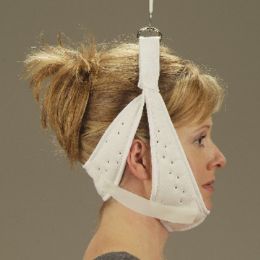
.jpg&newheight=260&quality=80)



















_(3).jpg&newheight=260&quality=80)

What medical conditions lead to cervical or lumbar traction therapy?
Chronic cervical nerve root compression may be caused by damage to the spinal disks between the cervical vertebrae. A disc presses on the nerve root where it leaves the bony spinal column. In the same way, lower back pain occurs when spinal disks in the lumbar region are compressed, pinching nerves in that part of the body.
Spinal disks act as shock absorbers for the spine. These compressible, soft disks separate each of the 33 vertebrae, allowing us to bend, flex and twist.
“Degenerative disk disease” is the term commonly used to describe the changes in the spine that cause pain in the lower neck (cervical region) or lower back (lumbar region). These changes to spinal disks occur as people age, and are not an actual disease. Similarly, chronic pain may result from injury to the spine.
In addition to treating degenerative disk disease, cervical and lumbar traction therapy may be used to treat herniated or protruding discs, cervical facet syndrome, chronic cervical strains, herniated nucleus pulposus with or without radiculopathy (any disease that affects the spinal nerve roots) and osteoarthritis. The process stretches muscles and soft tissues to separate the space between vertebrae. This decompresses the discs, alleviates pain and supports healing.
What types of traction devices exist?
There are a variety of traction devices available, many of them suitable for both home and clinical use. Some are more appropriate for clinical use only, and a few require prescriptions from a medical professional.
The most common device for home use is the “over the door” design in which patients wear a chinstrap harness attached to a counterweight. The counterweight (often filled with water or sand) is suspended over the door using a pulley system.
This arrangement pulls the chin harness upwards, relieving tension on the neck. Models exist for conducting cervical traction in the seated or supine positions. “Over the door" units are designed to deliver no more than 20 pounds of tension.
Pneumatic devices are also available that push up the head while pushing down on the shoulders. A pneumatic traction device will often consist of a soft foam cushion extending from the patient’s shoulders to the back of the head (occiput). The patient’s head is secured to the cushion with a strap, and a patient-controlled bellows then inflates the cushions to apply 20 to 50 pounds of tension (depending on the model).
Techniques also include supine mechanical motorized cervical traction administered by clinicians.
Are all of the devices mechanical?
Not all traction is accomplished through mechanical devices. Physical therapists may apply manual pressure to achieve many of the same results. The selection of assistive devices offered by Rehabmart includes special pillows, inversion tables, exercise devices, pillows and decompression therapy tables commonly used during physical therapy sessions.
If conducting traction therapy at home, your physical therapists should determine the amount of traction pressure to be applied for your condition, and the duration and frequency of the traction sessions. They will also train you in the appropriate use of any cervical or lumbar traction device you choose for home use.
Are other treatments available?
Treatment of spinal pain, whether in the neck or the lower back, may include painkillers, locally applied heat treatment, muscle relaxants, rest and physiotherapy.
Lifestyle factors such as sleeping position and posture may need to be modified as they can play a role in prolonging the condition. Exercises to strengthen the spine, and ensuring proper ergonomic positioning at work are also important.
In most cases symptoms will subside after a few weeks of treatment, but sometimes they can be prolonged and treatment will be continued.
Rehabmart carries a large assortment of superior quality Cervical / Lumbar Traction Devices from notable vendors such as Bird & Cronin, Inc., Fabrication Enterprises, Chattanooga, Core Products, Carex and others.
Hulet Smith, OT
Rehabmart Co-Founder & CEO
nrb